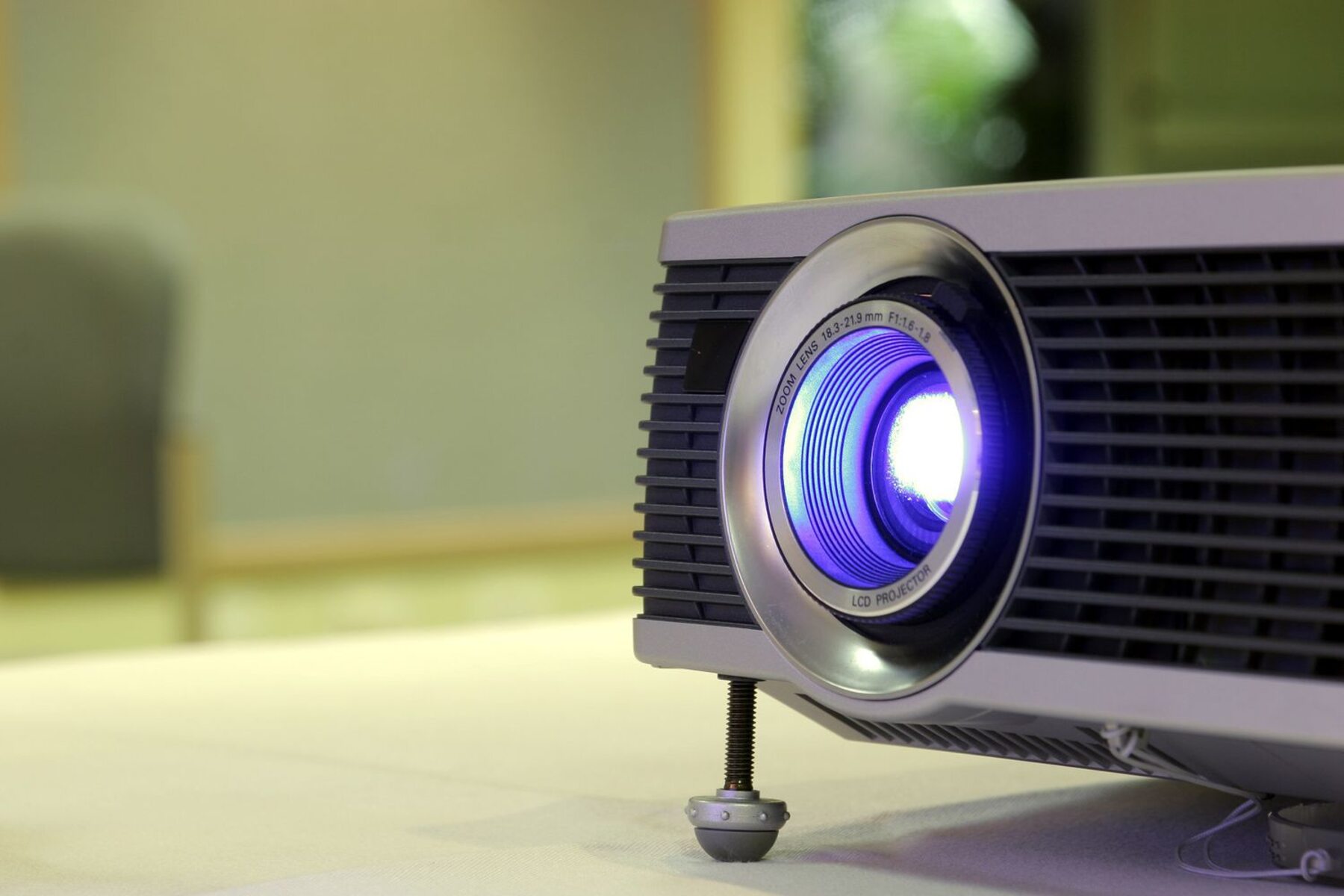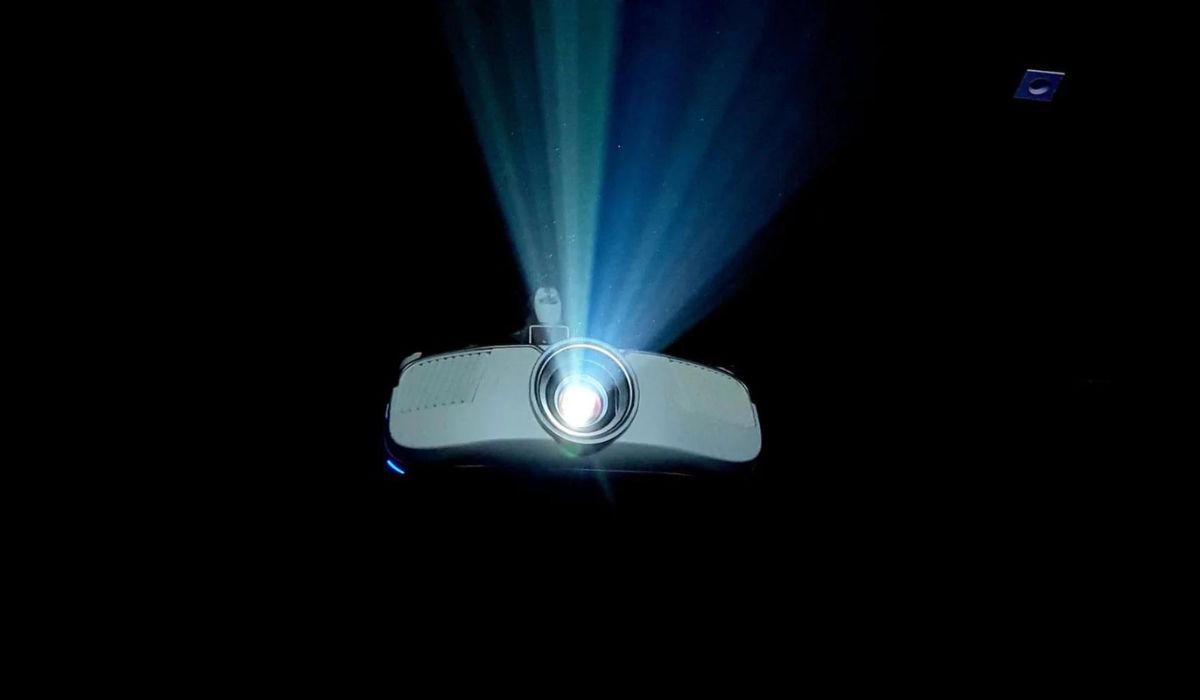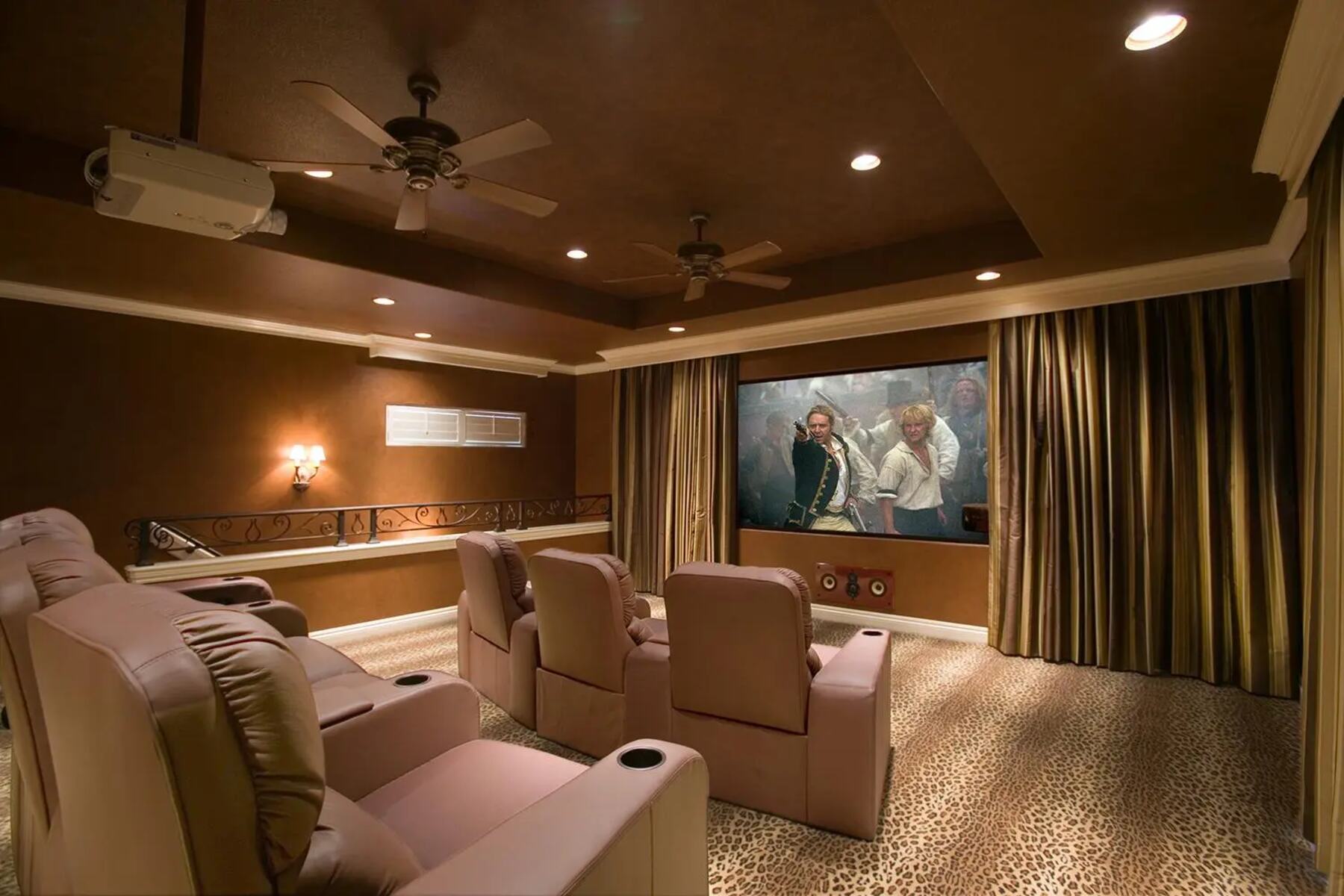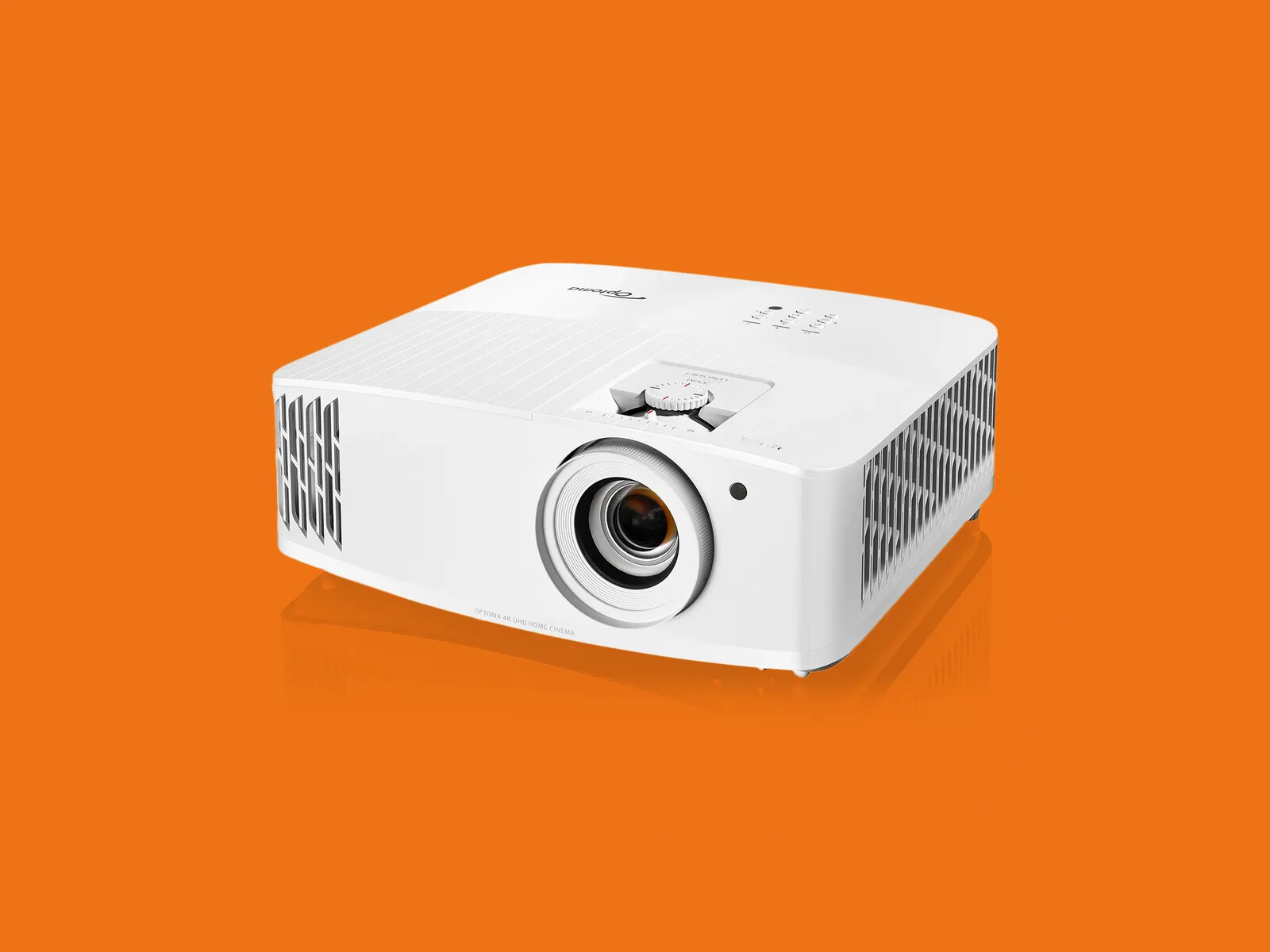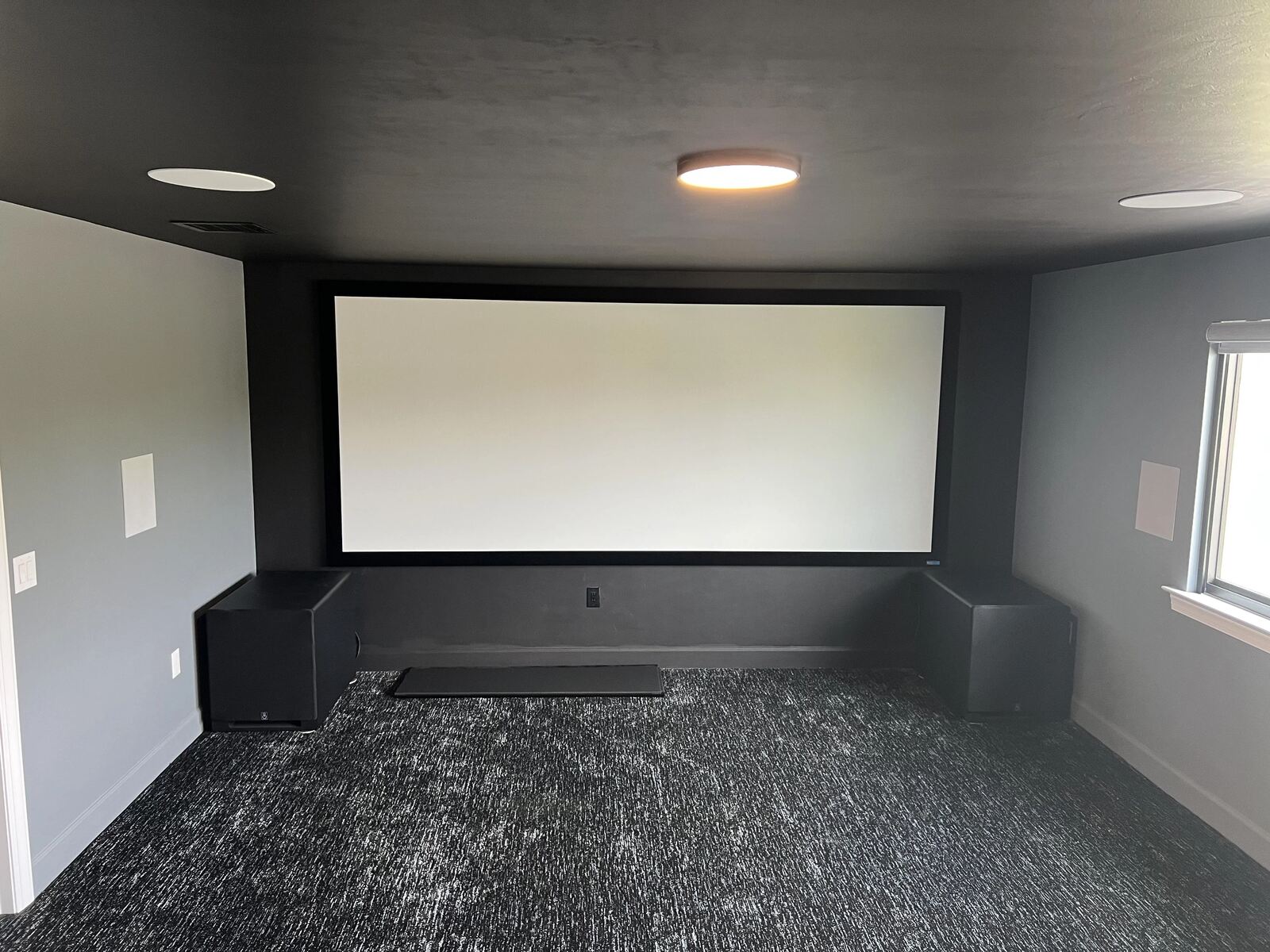Introduction
When it comes to projectors, there are various factors that determine the quality of the displayed image. One crucial aspect is the contrast ratio. The contrast ratio refers to the difference between the brightest and darkest parts of an image, which affects the level of detail and depth. Understanding the importance of contrast ratio can help you make an informed decision when selecting a projector for your needs.
In this article, we will delve into the concept of contrast ratio and its significance in projector technology. We will also discuss how contrast ratio is measured, the impact it has on image quality, and factors that affect the contrast ratio. Additionally, we will explore the relationship between contrast ratio and lumens, another important factor to consider when choosing a projector.
So, whether you’re a professional seeking the perfect projector for your presentations or a home theater enthusiast looking to bring movies to life, understanding contrast ratio is crucial. Let’s dive in and explore the world of contrast ratio in projectors.
What Is Contrast Ratio?
Contrast ratio refers to the ratio between the darkest and brightest parts of an image displayed by a projector. It is a measure of the difference in luminance, or brightness, between the blacks and whites in an image. A higher contrast ratio indicates a greater difference, resulting in a more vibrant and visually appealing image.
Contrast ratio is typically expressed as a numerical ratio, such as 1000:1 or 10,000:1. The first number represents the brightness of the whites, while the second number represents the darkness of the blacks. For example, a contrast ratio of 1000:1 means that the whites are 1000 times brighter than the blacks.
Having a high contrast ratio is essential for achieving rich, detailed, and lifelike images. It allows for better differentiation between different shades of gray and enhances the overall depth and clarity of the image. With a high contrast ratio, you can enjoy more vibrant colors, sharper details, and a more immersive viewing experience.
On the other hand, a low contrast ratio can result in a washed-out, flat, and less engaging image. Shadows may appear dull, and fine details may be lost. The lack of distinction between blacks and whites can make the image appear muddy and less defined.
It’s important to note that the contrast ratio is just one aspect to consider when evaluating the image quality of a projector. Other factors such as color accuracy, color reproduction, and overall brightness also play a significant role in delivering an exceptional viewing experience.
Now that we understand the basics of contrast ratio, let’s delve into why it is a crucial factor when choosing a projector.
Importance of Contrast Ratio in a Projector
The contrast ratio is a vital element to consider when selecting a projector because it directly impacts the quality and visual appeal of the projected image. Here are a few reasons why contrast ratio is important:
1. Enhances Image Depth and Detail: A high contrast ratio allows for better differentiation between the brightest and darkest areas of an image. This enhanced distinction enhances the depth and detail, making the image more lifelike and captivating.
2. Improves Color Accuracy: A projector with a good contrast ratio can accurately reproduce colors across a wide range, ensuring that the colors are vibrant, rich, and true to life. This is particularly important for presentations, home theater systems, and professional applications where color accuracy is critical.
3. Enhances Viewing Experience: A higher contrast ratio creates a more immersive and engaging viewing experience. Dark scenes are more intense, and bright scenes come to life with vividness and clarity. Whether you are watching a movie, playing a video game, or giving a presentation, a high contrast ratio ensures an enchanting visual experience.
4. Allows for Better Visibility: A projector with a high contrast ratio is especially beneficial in rooms with ambient light. The high contrast allows for clear visibility even in well-lit environments, ensuring that the projected image does not appear washed out or faded.
5. Adds Depth and Realism: A wider contrast ratio brings out nuances in shadows and highlights, adding depth and realism to the image. This is particularly important for movies, videos, and gaming, as it enhances the overall viewing experience and makes the content more immersive.
It’s essential to remember that while a high contrast ratio is desirable, the overall image quality depends on other factors as well, such as resolution, color accuracy, and screen size. Therefore, a balanced approach is necessary to ensure the best possible projection experience.
Now that we understand the importance of contrast ratio in projectors, let’s explore how it is measured and the significance of high and low contrast ratios.
How Is Contrast Ratio Measured?
Measuring contrast ratio involves determining the difference in luminance between the brightest and darkest parts of an image. There are two common methods used to measure contrast ratio: full-on/full-off and ANSI contrast ratio.
The full-on/full-off contrast ratio method measures the ratio between the brightest white image a projector can display and the darkest black image it can produce. This measurement is taken in a completely dark room, with the projector displaying an all-white image and an all-black image separately. The luminance of the white image is divided by the luminance of the black image to obtain the contrast ratio.
The ANSI contrast ratio method, on the other hand, provides a more realistic measurement by taking into account the various levels of brightness and darkness within an image. It involves displaying a series of alternating black and white rectangles on the screen, creating a checkerboard pattern. The average luminance of the white rectangles is divided by the average luminance of the black rectangles to determine the ANSI contrast ratio.
It’s important to note that the method used to measure contrast ratio can yield different results. Manufacturers may sometimes use different measurement techniques, leading to discrepancies in the reported contrast ratios. It’s always advisable to compare contrast ratios from different sources and consider other factors such as image quality and performance before making a decision.
While contrast ratio is an important factor to consider, it should not be the sole determining factor when choosing a projector. Other aspects such as color accuracy, image resolution, and overall performance also play a significant role in the quality of the projected image. Therefore, it is best to consider multiple factors together in order to make an informed decision that meets your specific needs.
Now that we have explored how contrast ratio is measured, let’s dive deeper into the implications of having a high contrast ratio versus a low contrast ratio.
Understanding High Contrast Ratio and Low Contrast Ratio
When it comes to projectors, understanding the difference between high contrast ratio and low contrast ratio is crucial in determining the quality of the projected image and the overall viewing experience.
A high contrast ratio indicates a significant difference between the brightness of whites and the darkness of blacks. Projectors with high contrast ratios offer deeper blacks, brighter whites, and a wider range of shades in between. This results in a more dynamic and immersive visual experience, as well as improved clarity and detail in both dark and bright scenes. High contrast ratios are particularly desirable for home theaters, where the goal is to replicate a cinematic experience with rich, lifelike colors and intense contrast.
On the other hand, a low contrast ratio indicates a smaller difference in luminance between the brightest and darkest parts of the image. Projectors with low contrast ratios may struggle to reproduce deep blacks, resulting in a washed-out appearance and limited detail in dark scenes. The lack of distinction between different shades of gray can also result in a loss of image depth and overall visual impact. However, it’s important to note that not all low contrast ratio projectors produce poor image quality. Some may still deliver satisfactory results, especially in well-lit environments or for certain applications where contrast is not a primary concern.
It’s worth mentioning that contrast ratio alone isn’t the sole indicator of image quality. Other factors such as color accuracy, resolution, and overall brightness also contribute to the overall visual performance. A balance between these factors is essential in ensuring an optimal viewing experience.
When comparing projectors, it is crucial to consider your specific needs and preferences. A high contrast ratio may be important if you plan to use the projector in a dark room or for applications where image quality is paramount, such as home theaters or professional presentations. However, if your usage scenario involves a well-lit environment or you prioritize factors like portability or budget, a low contrast ratio may still be sufficient.
Now that we have a better understanding of high and low contrast ratios, let’s explore the various factors that can impact the contrast ratio of a projector.
Factors Affecting Contrast Ratio
The contrast ratio of a projector is influenced by various factors that determine the quality of the displayed image. Understanding these factors can help you make an informed decision when selecting a projector. Let’s explore some of the key factors that can affect the contrast ratio:
- Screen Material: The type and quality of the screen material can have a significant impact on the contrast ratio. A high-quality screen with good reflective properties helps enhance the contrast by reflecting more light back to the viewer and reducing light scattering.
- Ambient Light: The level of ambient light in the room where the projector is used can affect the perceived contrast ratio. Excessive ambient light can wash out the image and reduce the visible difference between blacks and whites. Using projectors with higher brightness or implementing ambient light rejection technologies can mitigate this issue.
- Room Color and Lighting: The color of the room walls and the lighting conditions can also impact contrast ratio. Darker walls and controlled lighting can help reduce reflections and improve contrast, while lighter walls and brighter lighting may result in decreased contrast.
- Projector Settings: Proper calibration and adjustment of the projector settings play a crucial role in maximizing the contrast ratio. Adjustments such as gamma correction, brightness, and contrast settings can optimize the image and enhance contrast performance.
- Projector Technology: Different projector technologies, such as LCD, DLP, and LCoS, have varying contrast ratio capabilities. DLP projectors, known for their exceptional contrast, often exhibit higher contrast ratios compared to LCD projectors.
- Age and Lamp Usage: Over time, the performance of projector lamps may degrade, resulting in a reduction in contrast ratio. Replacing lamps at regular intervals can help maintain optimal image quality and contrast performance.
It’s important to note that while contrast ratio is an important consideration, it should not be viewed in isolation. The overall image quality, including factors like color accuracy, resolution, and brightness, collectively contribute to the visual experience. Therefore, it is crucial to evaluate projectors based on a combination of these factors before making a decision.
Now that we understand the factors that can impact the contrast ratio, let’s explore how contrast ratio influences image quality in projectors.
How Does Contrast Ratio Impact Image Quality?
The contrast ratio of a projector directly impacts the overall image quality and visual experience. Here are some ways in which contrast ratio influences the image quality:
1. Depth and Detail: A higher contrast ratio enhances the depth and detail of the image by allowing for better differentiation between the brightest whites and the darkest blacks. This results in a more realistic and immersive viewing experience, as fine details become more visible and shadows appear more defined.
2. Color Accuracy: A projector with a high contrast ratio can reproduce colors with greater accuracy. The ability to display a wide range of shades between blacks and whites ensures that colors are vibrant, well-defined, and more true to life. This is particularly important for applications where color accuracy is essential, such as photo and video editing, graphic design, and professional presentations.
3. Contrast and Dynamic Range: A high contrast ratio enhances the overall contrast and dynamic range of the image. Dark scenes appear deeper and more intense, while bright scenes appear brighter and more vivid. This creates a more visually engaging and immersive viewing experience, whether you are watching movies, playing games, or delivering presentations.
4. Detail in Dark Scenes: A projector with a high contrast ratio can maintain better detail in dark scenes. With deep, rich blacks and good shadow detail, you can see subtle nuances and textures that might otherwise be lost in low contrast scenarios. This is particularly important for movie enthusiasts and gamers who want to fully appreciate the details in darker scenes.
5. Viewing in Various Lighting Conditions: A projector with a high contrast ratio performs better in different lighting conditions. It can maintain image clarity and detail even in rooms with some ambient light. This allows for a more versatile usage scenario, as the image remains visible and engaging even when the environment isn’t completely dark.
It’s important to note that while a high contrast ratio is desirable, it is not the only factor that determines image quality. Other aspects, such as resolution, color accuracy, and overall brightness, also play a significant role. An optimal viewing experience is achieved when all these factors are balanced and optimized together.
Now that we understand how contrast ratio impacts image quality, let’s explore the difference between contrast ratio and lumens, and their respective roles in projector technology.
Finding the Right Contrast Ratio for Your Needs
When selecting a projector, finding the right contrast ratio that suits your specific needs is essential. Consider the following factors to determine the optimal contrast ratio for your requirements:
1. Usage Scenario: Consider how you plan to use the projector. If you primarily intend to use it for home theater setups, where image quality and immersive viewing experiences are paramount, a projector with a high contrast ratio is recommended. On the other hand, if you plan to use the projector for general presentations or in well-lit environments, a moderate contrast ratio may be sufficient.
2. Viewing Environment: Assess the lighting conditions in the room where the projector will be used. If the room can be completely darkened or has controlled lighting, it allows for a higher contrast ratio projector to showcase its capabilities. However, if the room has ambient light that cannot be fully controlled, a projector with good black levels and brightness becomes crucial to maintain image quality and visibility.
3. Content Type: Consider the type of content you will be projecting. If you mainly intend to use the projector for viewing movies, gaming, or other visually immersive content, a higher contrast ratio can enhance the depth, detail, and overall visual impact. However, if your usage primarily involves text-heavy presentations, a moderately high contrast ratio combined with good color accuracy may be more important.
4. Budget Considerations: It’s important to strike a balance between features, performance, and budget. Projectors with extremely high contrast ratios may come at a premium price point. Assess your budget and choose a projector that provides optimal image quality for your specific needs without breaking the bank.
Remember, while contrast ratio is an essential factor, it should not be the sole determinant of your decision. Consider other crucial factors such as resolution, brightness, color accuracy, and overall performance. It’s always a good idea to read reviews, compare specifications, and even test projectors in person to evaluate their performance and image quality before making a final decision.
Now that we have explored the importance of finding the right contrast ratio for your needs, let’s differentiate contrast ratio from lumens and understand their respective roles in projector technology.
Contrast Ratio vs. Lumens: What’s the Difference?
When researching projectors, you may come across two important terms: contrast ratio and lumens. While both contribute to the overall image quality, they are distinct concepts that serve different purposes. Let’s explore the difference between contrast ratio and lumens:
Contrast Ratio: Contrast ratio refers to the difference between the brightest whites and the darkest blacks in an image. It measures the range of luminance that a projector can produce. A higher contrast ratio indicates a larger difference and allows for better differentiation between shades of gray, resulting in more vibrant, detailed, and visually appealing images. Contrast ratio affects the depth, clarity, and overall dynamic range of the projected image.
Lumens: Lumens, on the other hand, measure the brightness of the projector’s output. It indicates the amount of light that the projector can project onto a screen or surface. Higher lumen values generally result in a brighter image. Lumens are especially important when considering factors such as the size of the projection screen, ambient light conditions, and the distance between the projector and the screen. In well-lit rooms or larger screens, projectors with higher lumens are recommended to ensure a clear and visible image.
Contrast ratio and lumens are independent of each other, and both play a crucial role in delivering an optimal viewing experience. While a high contrast ratio provides better differentiation between blacks and whites and enhances image depth and detail, lumens ensure a bright and visible image, especially in well-lit environments. It’s important to strike a balance between contrast ratio and lumens based on your specific needs and usage scenarios.
For example, in a dedicated home theater with controlled lighting, a projector with a higher contrast ratio may be preferred to reproduce deep blacks and vibrant colors. On the other hand, in a well-lit conference room, a projector with higher lumens is essential to counteract ambient light and deliver a clear and visible presentation.
It’s important to note that both contrast ratio and lumens are just two aspects of overall image quality, and there are other factors to consider, such as resolution, color accuracy, screen size, and viewing distance. Evaluating projectors based on a combination of these factors will help you make a more informed decision that meets your specific requirements.
Now that we understand the distinction between contrast ratio and lumens, let’s summarize the key takeaways and discuss the broader implications of these factors in projector selection.
Conclusion
Choosing the right projector involves considering multiple factors that contribute to the overall image quality and viewing experience. Contrast ratio and lumens play key roles in determining the performance of a projector, but they serve different purposes.
Contrast ratio affects the difference between the brightest whites and the darkest blacks, impacting image depth, detail, and overall visual appeal. A higher contrast ratio results in more vibrant colors, better shadow detail, and a more immersive viewing experience. On the other hand, lumens measure the brightness of the projected image. Higher lumen values are important for visibility in well-lit environments and ensure that the image remains clear and vibrant.
When choosing a projector, it’s important to consider your specific needs, such as usage scenario, viewing environment, and budget. For a home theater or applications where image quality is paramount, a higher contrast ratio may be desirable. In well-lit rooms or larger screens, higher lumens are important to ensure visibility. It’s also crucial to evaluate other factors like resolution, color accuracy, and overall performance to achieve the best visual experience.
Ultimately, the optimal projector choice involves finding the right balance between contrast ratio and lumens that suits your individual preferences and requirements. It’s recommended to read reviews, compare specifications, and, if possible, test projectors in person to assess their performance in different scenarios.
By understanding the significance of contrast ratio and lumens, you can make an informed decision and select a projector that delivers excellent image quality, vibrant colors, and an immersive viewing experience for your presentations, home theater, or professional applications.









